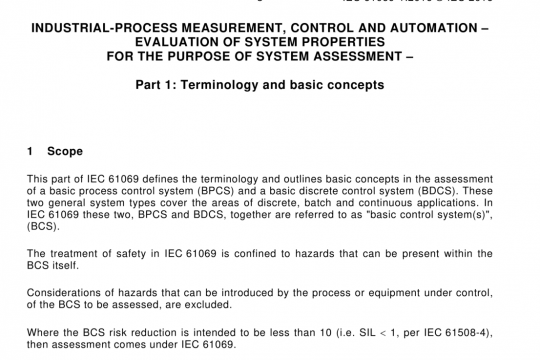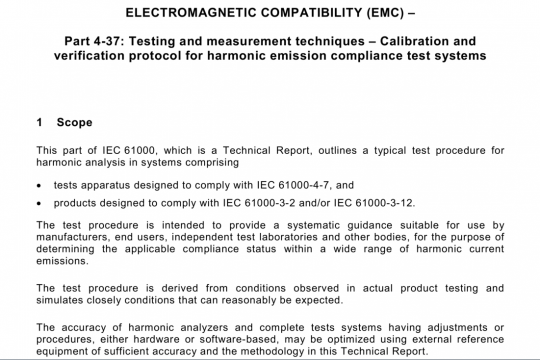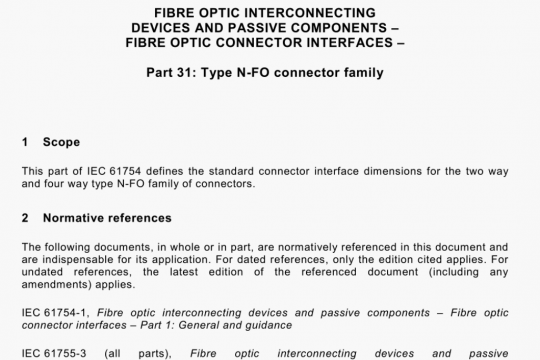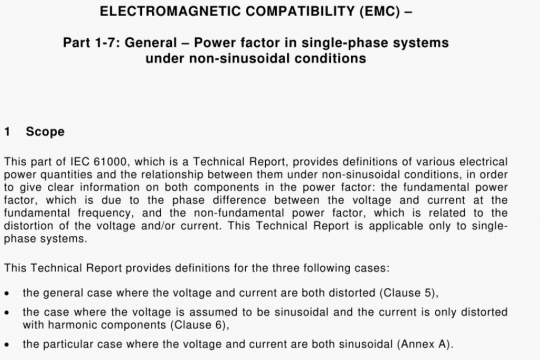PD IEC TR 62048 pdf free download
PD IEC TR 62048 pdf free download.Optical fibres – Reliability – Power law theory.
The above single-crack theory is then extended to a statistical distribution of many cracks. This is done in terms of a survival (or failure) Weibull probability distribution in strength. It can allow for several deployment geometries in testing and service. The inert distribution and the distributions obtained by static or dynamic fatigue testing are derived for before and after prooftesting. The latter is sometimes done with approximations that may not require knowing the B-value explicitly. Finally, the various parameters measured by the above testing are related to formulae for fibre reliability, that is, lifetime and failure rate.
Some of the main assumptions in the development are as indicated below.
— The relationship between the stress intensity factor, applied stress and flaw size is given by Equation (29); while at fracture, the relationship between the critical stress intensity factor, strength, and flaw depth is given by Equation (30).
— The crack growth velocity is related to the stress intensity factor by Equation (32).
— The Weibull distribution of stress (before any prooftesting) is unimodal according to Equations (85) and (86), or bimodal according to Equation (91). The (iii, S0) pair appropriate to the desired survival probability level and length must be used. Deployment lengths will differ upon the application such as fibre on reels, in cable, splice trays, or within a connector or other component. Because of the low failure probabilities desired, however, the low-strength extrinsic mode must usually be used.
— The values of the fatigue parameters, both static and dynamic, depend upon the fibre environment, fibre ageing, and fibre preconditioning prior to testing. In theory, they are taken to be independent of time, so that some engineering judgement is needed to decide the practical values to be used in the calculations. This also implies that the corresponding static and dynamic parameters equal each other (for the same environment and time duration).
— Zero-stress ageing is not accounted for. Since the above parameters are independent of time, the strength decreases due only to stress fatigue following the power law according to 7.1.
4 Formula types
The formulae utilise parameters obtained from fatigue testing-to-failure, and from prooftesting with potential random failures. In the service condition of interest, a fibre of effective length L (dependent upon deployment geometry) is subjected to a constant applied service stress that does not change with time. (This stress is tensile, including bending stress. Torsional or compressive stresses are not covered.) The lifetime as a function of failure probability or failure rate as a function of time are given.
The formulae assume a Weibull distribution with parameters that vary among fibre types and perhaps among fibres of the same type. Moreover, they change with environment and applied stress levels. The Weibull distribution may have several nominally linear terms depending upon several levels of flaw strength. It is important that the Weibull parameters for the term of interest be used in the formulae. These are obtained from fatigue measurements. Generally, the low-strength region near the prooftest stress and below is of interest, and measurements must be on long fibre gauge lengths and with many samples, so that the total fibre length tested is large. Parameters measured for a small number of short samples, characterizing the high-strength region, will differ from the preceding ones. They must not be used in the formulae to extrapolate to lower-strength lower-probability regions.
Within the above power-law assumptions, the equations of Clauses 7 to 11 are algebraically “exact”. However, in some applications, certain terms may be negligible, and more approximate and simpler algebraic equations are given in Clause 12. This has the advantage that the B-value, for which there is yet no standard test method and which has been reported to span several orders of magnitude, is not required.PD IEC TR 62048 pdf download.




